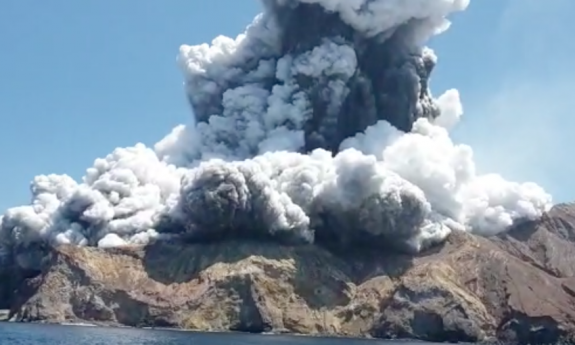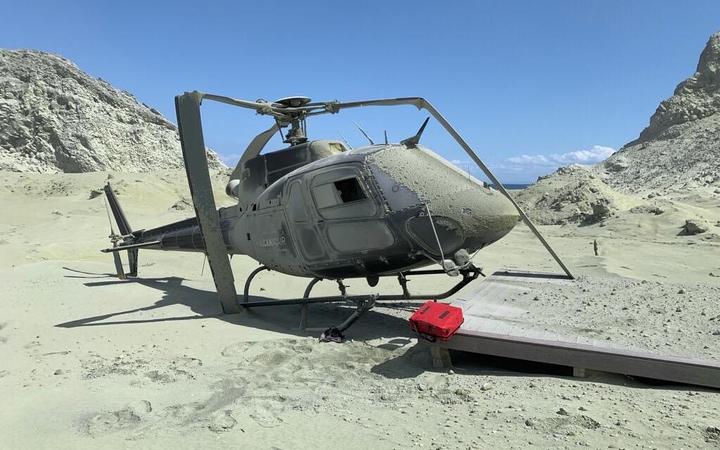Lethal Visits: Volcano Tourism and the White Island Eruption

It might have come across as written by a killjoy, but geographer Amy Donovan’s observations on “volcano tourism” in Geo, published by the Royal Geographical Society in 2018, remain timely. Be wary, her study suggests, of this particular brand of commodified, risky behaviour. Those with volcanophilic tendencies, she warns, were putting themselves at unnecessary risk. In July, such daring tourism claimed a life in Stromboli in Italy, while 40 hikers were killed by an explosion from Mount Ontake in Japan in 2014.
As with other elements of extreme tourism, marketed as borderline, mad and tinglingly existential, the theme is clear. According to Donovan, specifically describing the case of visiting a volcano, “You can breathe the gas, hear the sounds the earth is making. They want to get closer to feel the power of the earth.”
Those who perished on New Zealand’s White Island (Whakaari) in the Bay of Plenty before the belching plumed eruption did more than merely breathe that gas and hear the sounds of the earth. Within a short time, five of the 47 individuals on the island were dead. The volcanologists from GeoNet described the eruption as one of some violence, “an impulsive, shortlived event [that] affected the crater floor. Activity appears to have diminished since the eruption.” Ash plume had risen to heights approximately 12,000 feet above the vent.
One did not have to be gifted clairvoyant to note that something was afoot in on Whakaari. Small earthquakes had been registered; sulphur dioxide emissions had peaked, pushing record levels. Magma, in short, seemed to be on the move into island. But the speculation about this lethal blast was different, caused by, according to Erik Klementi in Discover, “a phreatic, or stream-driven, eruption. Water from the surface or crater lake that percolated into the rocks may have gotten hot enough to flash into steam, creating an explosion that sent an ash-and-steam plume over 12,000 feet (3.6 kilometres) upwards.”

Image from rnz.co.nz (Photo from Instagram/The Helicopter Page)
The point about such phreatic explosions is their inscrutable nature. The risk might well be there, but they can be sudden, unpredictable, and violent. Earth sciences academic Shane Cronin based at the University of Auckland paints a dramatic picture of scale. “The expansion of water into steam is supersonic in speed and the liquid can expand to 1,700 times its original volume.” As a species, suggests Cronin, we remain ignorant to the triggers of hydrothermal eruptions. “The warning periods, once an event gets underway, are likely in the order of seconds to minutes.”
This lack of certainty is an ill-match for the intrepid tourist keen to get up close to natural and dangerous phenomena. The eruption of Iceland’s Eyjafjallajökull volcano is often deemed the one responsible for a rise in volcano tourism. On the face of it, it seemed catastrophic, producing ash so thick it forced the cancellation of a hundred thousand flights and the most significant airspace closure since the Second World War. Coupled with Iceland’s economic woes stemming from the global financial crisis of 2008, the two crises met in nightmarish union.
The government ignored the doomsday types, and enlisted the consulting firm Brooklyn Brothers to piece together what seemed a tattered image. Tourism had fallen by 72 per cent in seven days. An overall 22 per cent decline in tourist numbers was predicted. But, in a very conspicuous nod to Oscar Wilde’s wisdom that the only thing worse than being talked about is not being talked about at all, the publicity machine capitalised. An umbrella body merging the Trade Council of Iceland, Invest in Iceland and the Icelandic Tourist Board called Promote Iceland harvested the attention.
Social media was employed with feverish enthusiasm. Citizens were encouraged in June 2010 for 60 minutes in the Iceland Hour campaign to post images, pictures and videos about their country. Between the months of June and August, live webcam footage of Iceland achieved some 60 million views. A disaster had effectively become a mobilised opportunity. By the end of 2017, Iceland had welcomed over two million tourists, making tourism the country’s main earner. Its unruly nature had become a capitalist boon and an environmental nightmare.
The emergence of niche volcano tourism also produced a particular type of danger seeking customer. (To brave a visit to an active volcano is to entertain the prospect of death from no shelter, ash inhalation or flying debris). The 2014-5 eruptions at Holuhraun in Iceland supplied a textbook case of unflinching stupidity in the face of state regulation. Iceland’s civil protection authorities had taken interest in the conduct of tourists near active volcanoes, resulting in the imposition of bans.
That did not deter some tourists and local operators keen to fill their pockets, and certainly not the dozens of scientists who had flocked to the area as part of the European-Commission FUTUREVOLC project. A natural show had been created; while enforcing road blocks was an easier prospect, preventing clandestine helicopter visits by night proved a more formidable proposition. As long as the helicopters did not land, the flights would be considered legal.
As Donovan notes, “The helicopter pilots clearly took advantage of the situation for economic reasons, but many of those taking the flights were also photographers – equally dependent for their livelihood on the spectacular sights of Holuhraun.”
Geotourism, as it is now termed, plays on a range of emotions and incentives. While the authorities and tour operators count the profits from visitors in what they badge as sustainable development (this element itself is being brought into question), they can also claim to be bringing humans closer to the earth even as they monetise that danger. The question arising here is also one of human cost: at what point is life worth forfeiting for the ecstasy of danger, preserved by a snap of social media?
Like what we do at The AIMN?
You’ll like it even more knowing that your donation will help us to keep up the good fight.
Chuck in a few bucks and see just how far it goes!










6 comments
Login here Register here-
whatever -
John L -
whatever -
Kathryn -
whatever -
Gregory
Return to home pageWe must make a sacrifice to appease the volcano gods.
Put Scotty in a helicopter and fly him over to White Island.
I’ve been around Whakaari and dived off it. Buggered if I’d go on it though! I know enough about these types of volcanoes to stay well clear.
Once again, we see the “Cruise Factor”.
There has been nothing but horror stories about ocean cruise boats for the past 10 years, but every time they happen, and are reported, many people apparently think “Hey, I should go on one of these ocean cruise boats!” and they start calling Travel Agents.
This factor could help explain the last Federal Election.
“whatever” I wouldn’t be too hasty to unfairly judge people who enjoy cruises. My husband and I are avid travellers and have travelled to more than 98 countries around the world over 40 years. We have enjoyed travelling independently, backpacking, camping, bicycle tours, horse riding tours, coach tours, hiring cars, travelling on public transport and, yes, cruising. Cruising is a wonderful way of getting a relaxing introduction to various cultures, albeit a brief introduction. It is a good idea to experience the whole GAMBIT of travelling which, of course, includes a wide range of cruising. The benefits are that one only has to unpack and pack once and it is a great way to travel for those who have mobility problems.
We have tried small ships to huge cruising ships and have enjoyed them all; they can be lots of fun, provided you go with the right frame of mind, stay active, participate in all the shipboard activities you fancy (or not) and mix with a wide range of people. You need not feel obliged to take the expensive on-ship excursions – in fact, it is far less expensive to organise your OWN independent travel from each port BEFORE you set sail.
However, it is important NOT to take foolish risks – this can be said for any form of travel. It is a devastating tragedy what happened to those poor people on White Island but I cannot understand why there was absolutely NO WARNING provided of the island’s instability. Surely, there must have been some form of seismic activity prior to such a huge volcanic eruption? Given the history of White Island (and its prior eruptions), I think it was outrageous that Royal Caribbean charged passengers a fortune (more than $350 each) to hike right down into the crater of an active volcano! What were they thinking?
I saw an ad on TV today for a cruise that will take people to the freaking Antarctic!
With helicopter rides to the ice and submarine sight-seeing trips. What could go wrong?
With adventure tourism, no one sets out to end their live on a day tour. People just look for an experience that offers the chance of feeling some adrenaline. Life without extraordinary experiences is not everyone’s lot. But some people are content with ordinary living, some not. So what?
whatever, I find it ironic, on the one hand there is much ado about climate change, LISTEN government/someone else other than me, Do Something! And on the other hand we have industries devoted to creating as big a carbon footprint per tourist as possible. Just how environmentally carbon-balanced is a cruise to Antarctica? Then there’s all the carbonated drinks sitting on Supermarket shelves waiting to get popped @ Xmas. Cheers, remember CO2 bubbles are good for trees, that is what trees breath, CO2.